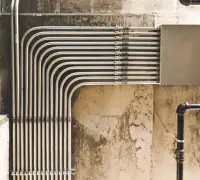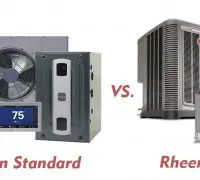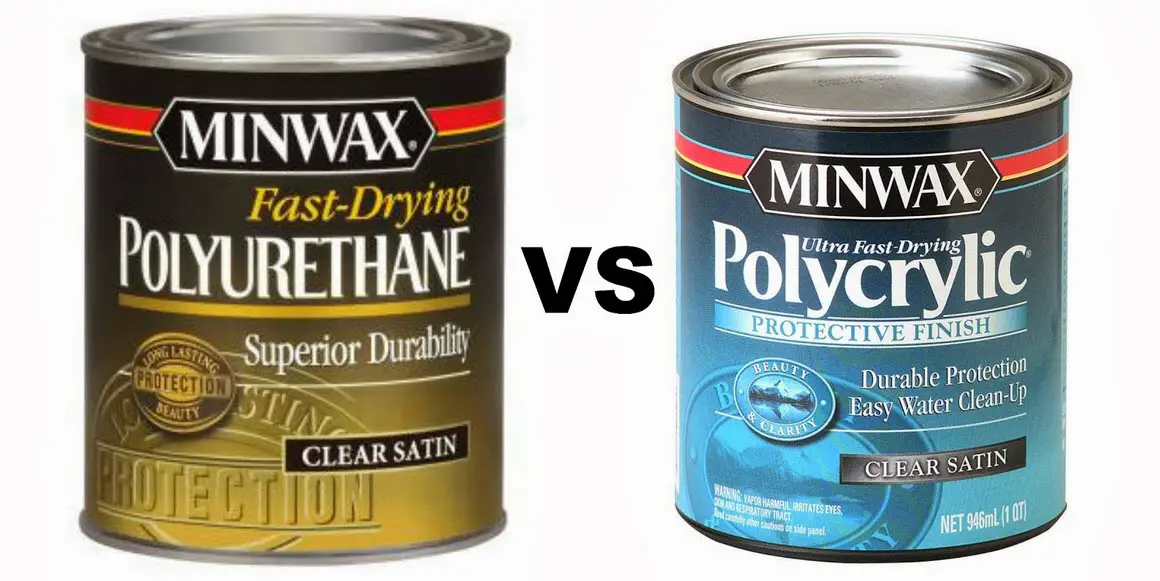
If you’re doing your woodworking right, you know that you cannot consider a job completely done unless it’s protected by a long lasting top coat or finish. But the dilemma is the choice you need to make between polycrylic and polyurethane for the final touch.
Polycrylic and polyurethane are the most popular choices, but you need to keep an open mind as there are other options for the finish on your wooden projects.
Page Table of Contents
- Why use Polycrylic or Polyurethane in the first place?
- What’s to say about polycrylic?
- What’s to know about polyurethane?
- Polycrylic vs. Polyurethane- the comparison
- You can choose between a water and an oil base in the case of polyurethane. You cannot do the same with polycrylic
- Oil-based polyurethane passes the durability test
- Polycrylic is less toxic and dangerous too
- Applying polycrylic is a lot trickier
- You may choose the sheens for both
- What’s the nature of your project?
- One last tip
Why use Polycrylic or Polyurethane in the first place?
When it comes to the finishes of your wood projects, both polycrylic and polyurethane are fundamental as they ensure that long lasting finish that you’re looking for. In some situations, you can also go with both.
However, most of the time, you’re only going to be able to use just one of them. The more you know about each of them, the easier it’s going to be for you to decide which one to go with for a specific project.
What’s to say about polycrylic?
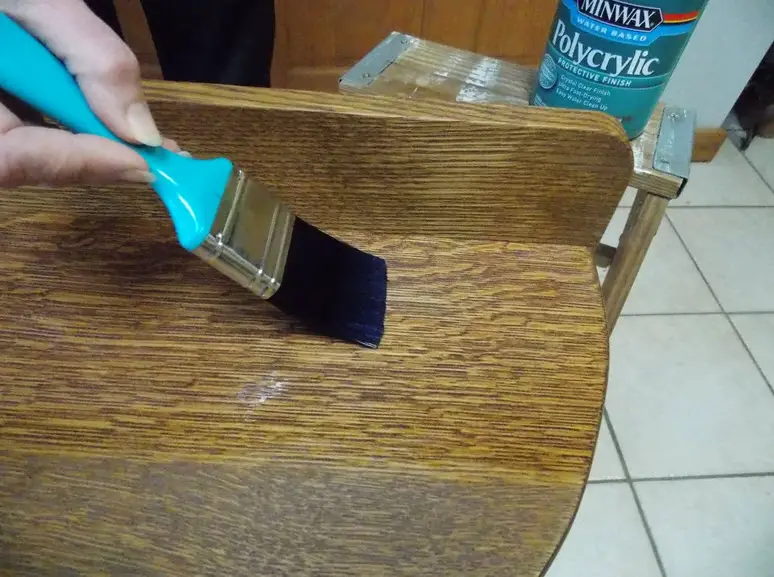
Polycrylic is a water-based sealer but it works as a protective coat as well and it’s quite a common choice for all DIY-ers and woodworkers out there. It presents different finishes- satin and gloss are only two to name.
Consoles, tables and chairs are common choices for many DIY projects and they do require plenty of time and dedication from your part.
Most DIY-ers are going to use polycrylic for this type of DIY projects simply because it creates a transparent finish which isn’t going to alter in any way the look of the stain or finish.
If you’re planning to use polycrylic, it’s important to mention that you’re going to have the ability to apply it with a spray bottle or a roller. It all depends on the project you’re working on as you need to get in the tight corners.
Polycrylic is great as it gives a pleasant look to the interior of your woodwork piece and it’s the no.1 choice as top coat for the light wooden surfaces (maple and birch). Its finish is clear and has no tint to it, which recommends it for the use on light surfaces. In addition, it’s not going to alter the appearance of your item in any way either.
In case you’re thinking about using a water-based stain for your wood project, you want to go with polycrylic. You don’t have to wait too long until it dries and its fast drying gives you speed on your projects.
Even though this isn’t its best quality, it’s important to highlight that polycrylic is also more affordable than polyurethane. This counts especially if you care about your budget.
One last thing to note: polycrylic is also easier to clean up than polyurethane and this may seal the deal for many.
Let’s highlight the main advantages when using polycrylic:
It dries clear
When you’re using polycrylic, you’re always going to have a clear finish, which counts especially when working on some light shaded surfaces (ash, maple or birch). Polycrylic maintains the appearance of the surface.
It dries fast
Unlike its opponent, polycrylic is going to need a lot less for completely drying. This gives you more time for working on some other details of your project.
It’s really affordable
When it comes to price, the polycrylic is always going to be the cheaper option. It’s water-based so it’s easier and cheaper to produce.
Its smell doesn’t linger
If you’re going to use polycrylic inside, you’re not going to have to worry about opening all the windows for all day long. Polycrylic doesn’t have a lingering odor so it’s a great advantage when working indoors.
It’s easy to clean
This is another quality to consider as polycrylic is really easy to clean up. This also ensures a better finish and some soap and water for cleaning the surface are going to be just fine for cleaning when you’re done with it.
Even though its downsides aren’t major, it’s important to take a look at them. After all, you do need to make the best decision for your project:
It may lead to a white finish
Even though the general opinion is that polycrylic is transparent, as a matter of fact, it isn’t. therefore, it may leave a milky finish if you’re working too thick. If you’re using it on dark colored paints, this is quite a common situation.
Applying it is quite tricky
Sitting on the runny side, but presenting a low viscosity, polycrylic is far from being easy to spread. In the case of vertical surfaces, it’s more challenging than one could imagine. Even though we all love that it dries fast, this may become a downside when applying it on larger surfaces.
What’s to know about polyurethane?
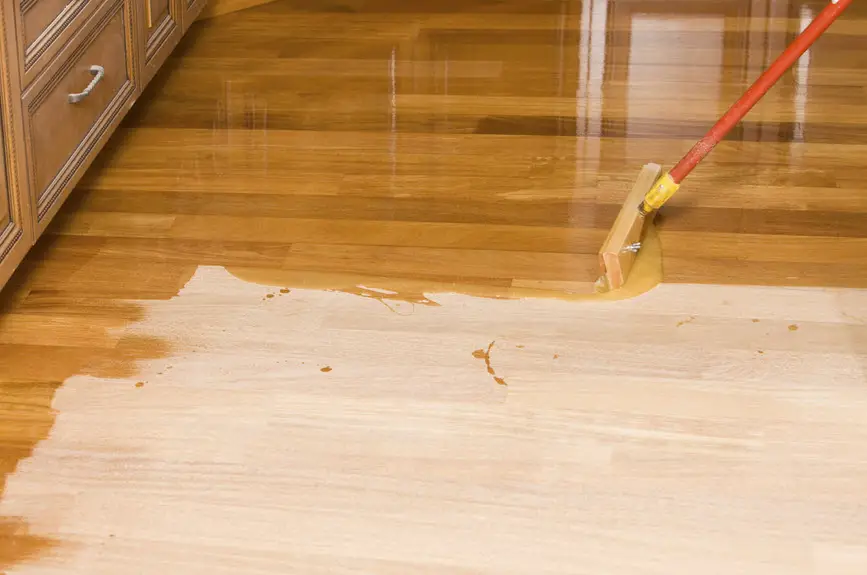
For the woodworking items that are going to have to handle the high traffic or if they’re going to be exposed to elements (heat is a good example), a hard finish that is going to extend their life span is mandatory to use.
The hardwood floors, the tabletops or other pieces that are going to have to handle a lot of abuse need a tough finish and polyurethane is one solid option for the job.
Polyurethane comes in both oil based and water based forms, which ensures its versatility. The water based polyurethane is a bit more popular than the oil-based formula as it dries fast, it’s less toxic and has a low odor as well.
Even though the oil-based polyurethane doesn’t dry as fast as the water-based one, it manages to overcome this flaw by creating a more durable finish than both the water-based polyurethane and polycrylic. It can even take extreme heat.
Presenting properties similar to melted plastic, polyurethane is going to create a tough and protective shell over the wood surface once it’s completely dry. This is important to know as its finish is going to be almost impossible to remove, lasting for quite some time. But this is a good thing for the furniture as it protects it against scratches for a very long time.
Polyurethane is also giving your furniture a nice shine, which is difficult to obtain when using polycrylic or other type of finishes. If you’re looking to give your pieces an elegant and shiny appearance, this one is the best choice.
You should go with the water-based polyurethane in the case of desks, side tables, picture frames or bookcases. As for the kitchen tables, hardwood flooring or other surfaces prone to getting wet, the oil-based formula is the better choice.
Here are the best parts when using polyurethane:
It’s long lasting
Even though you’re going to have to wait until polyurethane dries completely, once it dries, it’s going to create an amazing shell over your wooden piece, extending its lifespan. This tough shell is also scratch proof and you’re not going to have to redo the finish any time soon.
It’s great for the large areas
The fact that polyurethane needs quite some time for drying out, it’s the best option when you need to work on some large areas. You’re not going to have to stress out about some areas getting dry before you’re done with coating them. Polyurethane is going to allow you obtain a consistent appearance on your project.
It gives a shiny coat
When you’re looking for a glossy and exquisite finish for your wooden pieces, polyurethane is the option to go with. As opposed to polycrylic, the oil-based polyurethane is always going to give a shiny coat to the wood surfaces.
It works on finished and unfinished wood
If you’re working on some soft wood, polycrylic is a good option. On the other hand, polyurethane is going to work on both finished and unfinished wood, which improves its versatility.
The downsides aren’t major when using polyurethane, but you should take a look, nevertheless:
You need ventilation
If you’re going to use oil-based polyurethane, you’re going to have to be in a really large room with highly efficient ventilation. It’s not only the odor that you need to worry about, but also its toxicity and high risk for fire, as it’s flammable.
You need to be patient
It’s never a good idea to work with polyurethane if you’re working on tight frame. Polyurethane does take time to dry. Once it dries, its curing also is time consuming.
Polycrylic vs. Polyurethane- the comparison
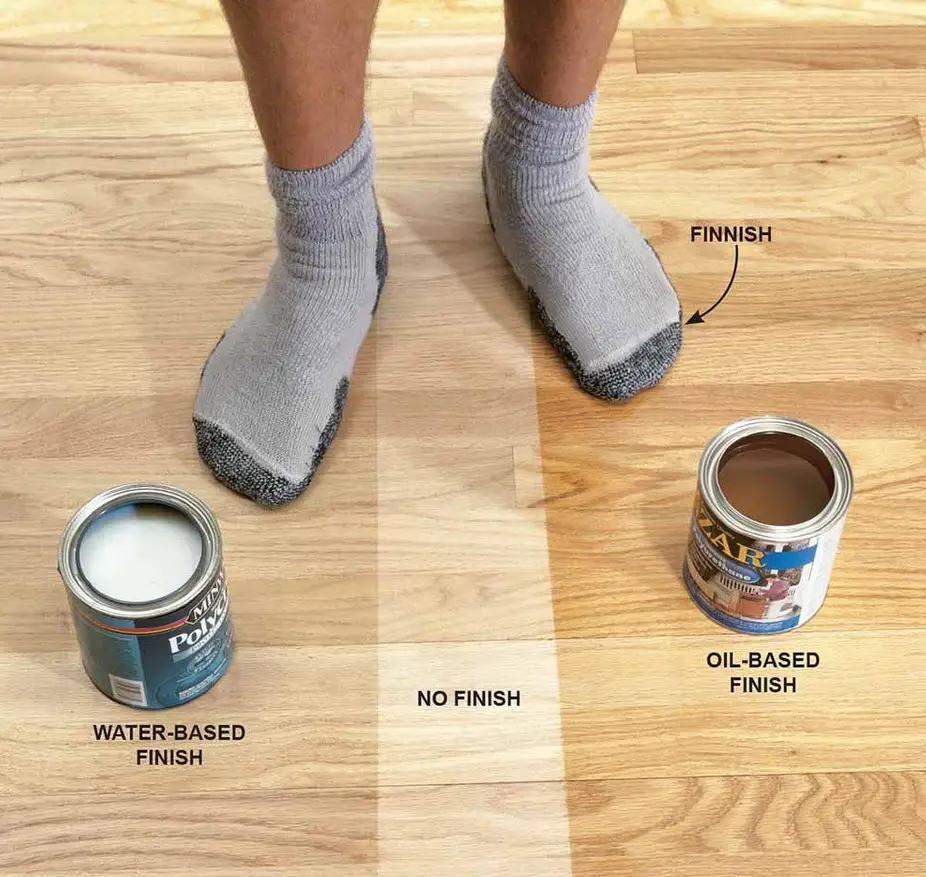
Even if it’s quite intuitive which is better for a certain type of job, let’s do our bits and bobs and really get into the details:
You can choose between a water and an oil base in the case of polyurethane. You cannot do the same with polycrylic
When you go shopping, you’re going to notice both water-based and oil-based formulas for polyurethane and you’re not going to be able to find the same option for the polycrylic sealers.
If you’re still unaware about the differences between the two types of formulas, here are some hints:
- Oil-based polyurethane is long lasting which recommends it for the finish on wooden floors or furniture that takes intense use. It handles heat just great, as opposed to polycrylic or the water-based polyurethane. It’s also a reliable option for the outdoor furniture and various wooden objects that may be exposed to moisture.
- Water-based polyurethane includes less odorous volatile compounds (VOCs) than the oil-based formulas. This means the risk for getting into your lungs and nose is lower. It even dries faster, but it doesn’t manage to take the high temperatures or water like the oil-based type.
- Polycrylic is water-based so it’s less toxic and less smelly than both types of polyurethane. It’s easier to work with and dries really fast. However, it may take you longer to cure it. If you’re going to rest something on a surface covered with polycrylic before its curing is completely done, you may scratch or ruin the clear coat. In addition, it doesn’t take heat as well as the oil-based polyurethane either.
Oil-based polyurethane passes the durability test
No matter the good things that polycrylic brings to the table, polyurethane is always going to ensure a more durable and tougher finish that is going to protect the wooden furniture or floor a lot better. oil-based polyurethane is the option to go with when you’re looking for a sealer that takes the stronger factors: lots of foot traffic, vigorous and daily use. If your finished project is also going to be exposed to moisture or high temperatures constantly, you should definitely go with the oil-based polyurethane.
Polycrylic is less toxic and dangerous too
Polyurethane is really flammable while wet, so you need to be extra careful when using it or storing it. Its high VOC count may irritate the lungs, so you’re going to need to wear respiratory protection through the whole application. Even though the water-based formula is less toxic and less strong, you should still play it safe and wear protection.
Since it has no strong smell nor it’s as toxic as polyurethane, polycrylic may be used without wearing respiratory protective gear.
Applying polycrylic is a lot trickier
You may use both a brush or a spray for polyurethane and polycrylic too. As polycrylic is a lot runnier, its application may get a lot more challenging. You need to apply really thing coats, making sure that you have no dripping. Wait to dry so that you don’t obtain a sticky and unpleasant finish. Since polycrylic dries really fast to the touch, it’s going to be a real challenge to create an even finish over a large surface.
Keep in mind that you may apply both polycrylic and polyurethane over oil-based and water-based points and finishes. However, polycrylic isn’t going to dry fast over some latex paint because of the additives included in the paint.
You may choose the sheens for both
Both polycrylic and polyurethane come in satin, gloss and high-gloss sheens, but you may go really shiny in order to obtain the look you’re looking for on your furniture or wooden projects. It’s important to notice that oil-based polyurethane is going to get dry leaving a subtle yellowish tint. This means you should use it on wood that’s dark/warm enough to cover that yellow hue.
On the other hand, water-based polyurethane is going to dry entirely clear, so you may use it for light woods (maple is a good choice).
Even though polycrylic dries clear most of the time, remember that it can lead to a milky appearance due to poor application. If you’re applying it too heavily over some dark wood or paint, be ready for a milky look on your project.
What’s the nature of your project?
Truth be told, polycrylic and polyurethane are great options for many projects: picture frames, side tables, desks, dressers and so on. If you’re still sitting on the fence, asking the important questions may help you get down with it. The tight time frame, the ventilation of the room, the use is going to take the project or the size of your projects are fundamental when making the final choice.
One last tip
Polycrylic and polyurethane are great options for all sorts of projects. Keeping in mind the aforementioned factors is going to help you take the best choice for your project, every single time.
Here’s a video from WoodWorkWeb on the subject:
Further resources:
https://www.bobvila.com/articles/polycrylic-vs-polyurethane/
https://www.thesawguy.com/polycrylic-vs-polyurethane/
Polyurethane vs. Polycrylic: Which Is The Best For Your Project?




